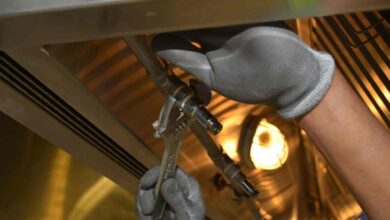Emotional and physical intimacy forms the bedrock of any lasting romantic relationship. It’s a profound bond that goes beyond the ordinary, creating connections that contribute to personal growth and mutual fulfillment. This level of intimacy involves a deep understanding of each other’s thoughts, desires, and vulnerabilities. It’s about sharing dreams, fears, and secrets and feeling safe and accepted in each other’s arms.
Building this kind of intimacy takes time and effort. It requires open communication, active listening, and a willingness to be vulnerable. It’s about creating a space where both partners can be authentic without judgment. By investing in this deeper level of intimacy, couples can strengthen their intimate connection and create a truly fulfilling and enduring relationship.
Table of Contents
Emotional intimacy: The foundation of relationships
Emotional intimacy is the cornerstone of a healthy and fulfilling partnership. It encompasses the closeness, connectedness, and bondedness one experiences in loving relationships. It’s about sharing your thoughts and feelings without fear of being judged.
Open communication is critical in creating emotional intimacy. It’s about being open and vulnerable, sharing your hopes, fears, and dreams with your partner. Regularly investing time in meaningful conversations will help to foster a deeper emotional connection.
Another critical aspect of emotional intimacy is empathy. It affects understanding and sharing your partner’s feelings, making them feel valued, loved, and supported. Kindness leads to a stronger emotional connection, as both partners feel understood and appreciated for who they are.
Physical Intimacy: More than just physical contact
Physical intimacy, while commonly associated with sexual activities, extends far beyond that. It’s about physical touch, affection, and closeness with your partner. This intimacy can include kissing, hugging, cuddling, and holding hands.
Physical intimacy is essential to a healthy relationship as it promotes bonding and creates a sense of safety and security between partners. Regular physical touch has been shown to reduce stress hormones and increase feelings of happiness and connection. It’s also a way to show love, affection, and appreciation for your partner.
Connecting the dots: The intersection of emotional and physical intimacy
Emotional and physical intimacy are intertwined, each one contributing to the other. A strong emotional connection can enhance physical intimacy by fostering trust, comfort, and a deeper understanding of each other’s desires. Similarly, physical intimacy can strengthen emotional intimacy by promoting closeness and affection between partners.
As couples build on both forms of intimacy, they create a stronger foundation for their relationship. They also develop a more profound sense of commitment and loyalty towards each other, allowing them to navigate challenges easily.
Overcoming barriers to intimacy
Building emotional and physical intimacy can be challenging. Many factors can hinder a couple’s ability to connect at this more profound level, including past traumas, communication issues, and busy schedules. However, these barriers can be overcome with conscious effort and commitment from both partners.
One of the most significant barriers to intimacy is fear. Fear of vulnerability or rejection can make opening up and sharing your thoughts and feelings challenging. However, by creating a safe and non-judgmental space for each other, couples can slowly break down these barriers and build trust.
Another common barrier to intimacy is a need for more communication. When partners don’t communicate openly and honestly, it can lead to misunderstandings and resentment. Regularly checking in and actively listening helps bridge this gap and fosters a deeper understanding of each other’s needs and desires.
Making intimacy a priority
In today’s fast-paced world, getting caught up in work, chores, and other responsibilities is easy. However, building emotional and physical intimacy requires time and effort from both partners. Setting aside time for each other without distractions or interruptions is essential.
It can include date nights, weekend getaways, or simply unplugging from technology and spending quality time together. Try being more adventurous in the bedroom by incorporating sex toys like dildos into your routine, experimenting with different positions, and exploring each other’s fantasies.
Another way to prioritise intimacy is by expressing appreciation for one another regularly. Sending thoughtful messages or compliments throughout the day can strengthen the emotional connection and make your partner feel loved and valued.
The power of vulnerability
Vulnerability is the key to building deep emotional and physical intimacy. It’s about letting your guard down and exposing your true self to your partner, sharing your fears, dreams, and insecurities. This level of openness can be scary, as it requires stepping outside your comfort zone but also allows for a more profound connection.
When you embrace vulnerability, you open yourself to acceptance, understanding, and love. Being vulnerable creates an environment of trust and acceptance where both partners can feel safe and authentic. It also allows you better to understand your partner’s emotions, needs and desires, fostering more profound empathy and connection.
In a vulnerable state, you create the space for your partner to reciprocate and share their vulnerabilities. This mutual exchange of trust and openness strengthens your bond, creating a foundation of intimacy built on honesty and authenticity.
The last word
Building emotional and physical intimacy is critical for the success of any romantic relationship. It involves open communication, empathy, and a willingness to be vulnerable. By investing time and effort into creating a deeper connection, couples can strengthen their relationship and create a lasting intimate bond that will stand the test of time. Prioritise intimacy in your relationship, and watch as it blossoms into a beautiful journey of love, trust, and understanding.
Please explore our site for more exciting content if you liked dis article.





